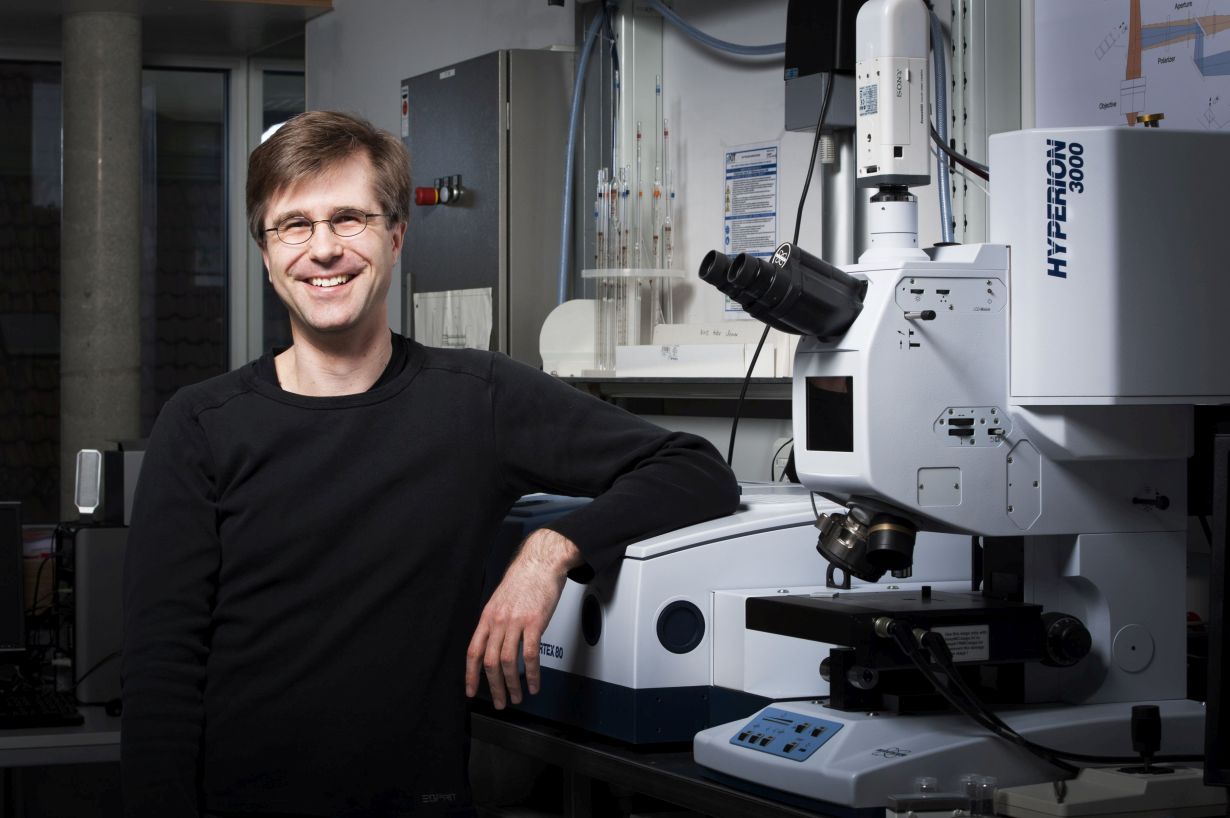Touching up scratches in car paint with laser technology, using light to make sensitive electronic parts more flexible or harder: These are the solutions Professor Christopher Barner-Kowollik is working on at Karlsruhe Institute of Technology (KIT) and at the Queensland University of Technology (QUT) in Brisbane, Australia. His research on novel ways to precisely adapt coatings and materials for different applications using spectrally pure light from lasers, is now also the focus of a project funded by the Australian Research Council with more than AUD three million (more than EUR two million).
“Christopher Barner-Kowollik is one of the leading researchers in his field worldwide, and at the same time, his work both in Germany and Australia makes him an outstanding example of how a cosmopolitan attitude in science can be put into practice,” Professor Holger Hanselka, President of KIT says. “We sincerely congratulate him on receiving this fantastic award by the Australian Research Council.”
“Materials research – not least in the micrometer and nanometer ranges – is the basis of innovation in several areas. Christoper Barner-Kowollik’s research work allows perfect customization of materials for various fields of application. The Australian Laureate Fellowship award and the associated funding are also an acknowledgment of his outstanding achievements – we share his happiness about this award!” Professor Oliver Kraft, Vice President for Research of KIT adds.
The research of Christopher Barner-Kowollik focuses on the use of light for programming and re-programming materials so that they are perfectly suitable for each specific application. These applications range from smart coatings and materials to synthetic proteins and laser-controlled 3D printing technologies. “An example of this would be the developing of a coating whose mechanical properties could be adjusted to make it more flexible by simply shining light on it in certain areas and then using a different light wavelength to harden it again,” explains the chemical scientist. This could be how car scratches are healed in the future and how the sensitive parts of electronic devices are fitted and removed.
Professor Barner-Kowollik said with estimates that by 2030, 10 per cent of all goods would be 3D printed, an ability to use the same ink to produce not just multiple products but products of varying material just by changing wavelengths, would be a game changer. “One of the holy grails of 3D laser lithography is to be able to write 3D structures with nanometer resolution using visible light as this has the potential to revolutionize the fabrication of computer chips,” he said.
In his future research, Christopher Barner-Kowollik will also examine how light can be used to write, store, and read information embedded within polymers that form the building blocks of many materials. The properties of such large molecules (macromolecules) can be altered by controlling their molecule structure, the so-called sequence. “Sequence-coded and sequence-readable polymers will be of great value in synthetic protein design and, for example, as highly defined inks for 3D micro- and nano-printing,” Christopher Barner-Kowollik adds.
Barner-Kowollik will receive a founding amount of more than AUD three million that he can allocate freely within the scope of his research over the next five years. Important fields of research – especially the production of 3D inks for 3D laser lithography, conducted jointly with Prof. Martin Wegener (KIT) – will benefit from the money and see an extension of the close cooperation with KIT including an intensification of the exchange of PhD students.
About the person
In April 2017, Christopher Barner-Kowollik was appointed professor for Materials Science at the Queensland University of Technology (QUT) in Brisbane, Australia. Concurrently, he continues his research at Karlsruhe Institute of Technology (KIT), including work at the ‘Molecular Structuring of Soft Matter’ Collaborative Research Center 1176 (SFB), of which he was the founding director in 2016. This SFB develops new synthesis methods for long-chained molecules to enable their preparation with an unparalleled precision, skyrocketing innovation for a number of material classes. Barner-Kowollik’s research group (www.macroarc.org) works both at QUT and KIT. Last year, Barner-Kowollik received, together with Professor Martin Bastmeyer and Professor Martin Wegener from KIT, the Erwin Schrödinger Prize by the Helmholtz Association of German Research Centers in the amount of EUR 50,000 for their interdisciplinary research on three-dimensional cell cultures.
For more information on the research of Professor Christopher Barner-Kowollik, see:
https://www.kit.edu/kit/english/pi_2017_050_erasable-ink-for-3d-printing.php
https://www.kit.edu/kit/english/pi_2016_165_macromolecules-light-to-design-precision-polymers.php
https://www.kit.edu/kit/english/pi_2016_091_switching-chemical-reactions-with-light.php
For more information on the Australian Laureate Fellowships see:
http://www.arc.gov.au/australian-laureate-fellowships
In close partnership with society, KIT develops solutions for urgent challenges – from climate change, energy transition and sustainable use of natural resources to artificial intelligence, sovereignty and an aging population. As The University in the Helmholtz Association, KIT unites scientific excellence from insight to application-driven research under one roof – and is thus in a unique position to drive this transformation. As a University of Excellence, KIT offers its more than 10,000 employees and 22,800 students outstanding opportunities to shape a sustainable and resilient future. KIT – Science for Impact.

